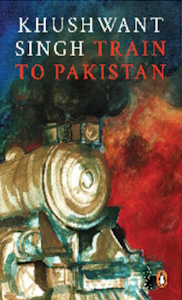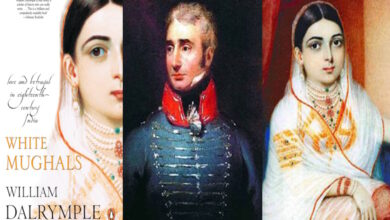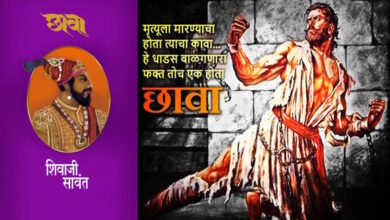Train to Pakistan by Khushwant Singh – Summary, Themes & Book Review
Train to Pakistan by Khushwant Singh – A Powerful Tale of Humanity Amid Horror
 When we talk about Partition literature, one name that instantly comes to mind is Khushwant Singh, and one of his most impactful works is “Train to Pakistan”. Published in 1956, this novel captures the brutal reality of India’s Partition in 1947, a period soaked in bloodshed, chaos, and displacement. But what makes Train to Pakistan stand out is that it doesn’t just talk about political events—it talks about people.
When we talk about Partition literature, one name that instantly comes to mind is Khushwant Singh, and one of his most impactful works is “Train to Pakistan”. Published in 1956, this novel captures the brutal reality of India’s Partition in 1947, a period soaked in bloodshed, chaos, and displacement. But what makes Train to Pakistan stand out is that it doesn’t just talk about political events—it talks about people.
Let’s explore why Train to Pakistan still matters, what the book is about, and why it deserves a place on every Indian reader’s bookshelf.
Overview of the Book
Train to Pakistan is set in a fictional village called Mano Majra, located on the border of India and Pakistan. Unlike the rest of the country that is burning in religious riots, Mano Majra initially remains peaceful. Here, Sikhs and Muslims live together in harmony. But as Partition progresses, even this small village can’t escape the horrors.
The story takes a dark turn when a train arrives carrying dead bodies of Sikhs and Hindus from Pakistan. This moment changes everything, shattering the delicate peace of Mano Majra.
At the heart of the story are two characters—Juggut Singh, a local badmash (goon) with a good heart, and Iqbal, an educated man sent by a political party to influence the villagers. Their actions and decisions reflect the clash between action and idealism, and ultimately, the human cost of political decisions.
A Human Story in a Historical Setting
What makes this book so powerful is that Khushwant Singh doesn’t treat Partition as just a historical event. He treats it as a deeply personal human tragedy. The fear, confusion, and heartbreak are portrayed through ordinary people. There’s no glorification of violence, no political heroism—only the raw emotions of real people trying to survive.
For Indian readers, especially those whose families have lived through Partition, the book hits home. It’s emotional, haunting, and reflective.
Simple Language, Deep Emotions
Khushwant Singh’s writing style is direct, clear, and very easy to follow. He doesn’t use fancy words or complicated sentences. Yet, the emotions he brings out are deep and hard-hitting. That’s the beauty of this novel—it is written in a way that anyone can understand, but no one can forget.
Even if you’re not a regular reader, this book will pull you in with its gripping story and relatable characters.
Key Themes in Train to Pakistan
-
Communal Harmony and Conflict:
Initially, Mano Majra is a symbol of unity. But when Partition politics arrive, neighbors turn into enemies. This transformation is the central tragedy of the book. -
Loss of Innocence:
The villagers are simple people who don’t care about India or Pakistan. But their world is ripped apart by events they didn’t ask for. The novel shows how innocence is destroyed by politics. -
Sacrifice and Redemption:
Juggut Singh’s character arc is the most powerful. A man with a criminal past chooses to rise above hate in the end. His sacrifice gives the novel its emotional depth. -
Political Manipulation:
Through the character of Iqbal, Singh shows how disconnected political leaders are from the ground reality. While people are dying, politics remains selfish and strategic.
Why You Should Read Train to Pakistan Today
Even though the book was written nearly 70 years ago, its message is still relevant today. In a world where religious intolerance and political divisions are rising, Train to Pakistan reminds us of the importance of compassion, understanding, and humanity.
This isn’t just a book about Partition. It’s a book about people—how they break and how they heal. It forces us to think: What would we do in such times? Would we choose hate, or would we choose humanity?
Impact and Legacy
Khushwant Singh was one of India’s most respected writers and journalists, and Train to Pakistan remains his most celebrated work. It’s part of school and college syllabi across India and Pakistan. The book has been translated into many languages and adapted into a film in 1998.
Critics and readers alike consider it one of the most honest and courageous depictions of Partition. It doesn’t take sides—it only tells the truth.
Who Should Read This Book?
-
History lovers who want to understand Partition on a human level.
-
Students looking for powerful Indian literature.
-
Anyone interested in emotional, realistic stories.
-
Readers new to fiction, as the language is simple and the story is gripping.
Where to Buy Train to Pakistan?
You can find Train to Pakistan by Khushwant Singh on all major online platforms. It is also available in Hindi and other Indian languages. Make sure to get a copy with a good introduction or foreword for better context.
On www.fliptokart.com, we recommend reading this book not just as a historical document, but as a story that has something important to say to every Indian, even today.
Final Thoughts
Train to Pakistan is not just a book—it’s a mirror. A mirror that shows us what hate can do, but also what love and sacrifice can achieve. It is a must-read for every Indian, especially in today’s times when we need reminders of shared humanity more than ever.
FAQs about Train to Pakistan by Khushwant Singh
1. What is the main message of Train to Pakistan?
The main message is that communal violence and hatred lead to the destruction of humanity, but hope and compassion can still survive in dark times. It shows how politics affects ordinary people and stresses the need for human values.
2. Is Train to Pakistan based on a true story?
While the village of Mano Majra is fictional, the events surrounding the Partition and the emotional turmoil are based on true incidents. Khushwant Singh drew inspiration from what he personally witnessed during Partition.
3. Is the book suitable for beginners in reading?
Yes, the language is simple, and the story is easy to follow. It is perfect for new readers or those who want to start reading Indian English literature.
4. What age group is this book suitable for?
The book is suitable for readers aged 16 and above due to its mature themes, including violence and communal conflict. College students and adults will appreciate it most.
5. Are there any film adaptations of Train to Pakistan?
Yes, a film adaptation was released in 1998 with the same name. However, the book remains a richer and more emotional experience.
6. Where can I buy the book Train to Pakistan?
You can purchase it on various online platforms like Amazon, Flipkart, or check availability on www.fliptokart.com, where we review and recommend such classics.
If you’re looking to read something meaningful, emotional, and unforgettable, Train to Pakistan should be on your reading list. It’s not just a story—it’s a powerful reminder of our shared history.
Train to Pakistan by Khushwant Singh
Our Review Score
Total Score 4.9/5
The partition of India was one of the most dreadful times in the recent Indian history. Since 1950s, it has time and again been depicted in various media. However, while most of those focussed mainly on the socio-political causes and effects, the Train to Pakistan is a novel which has captured the essential human trauma and suffering in the face of such a terror and crisis.


